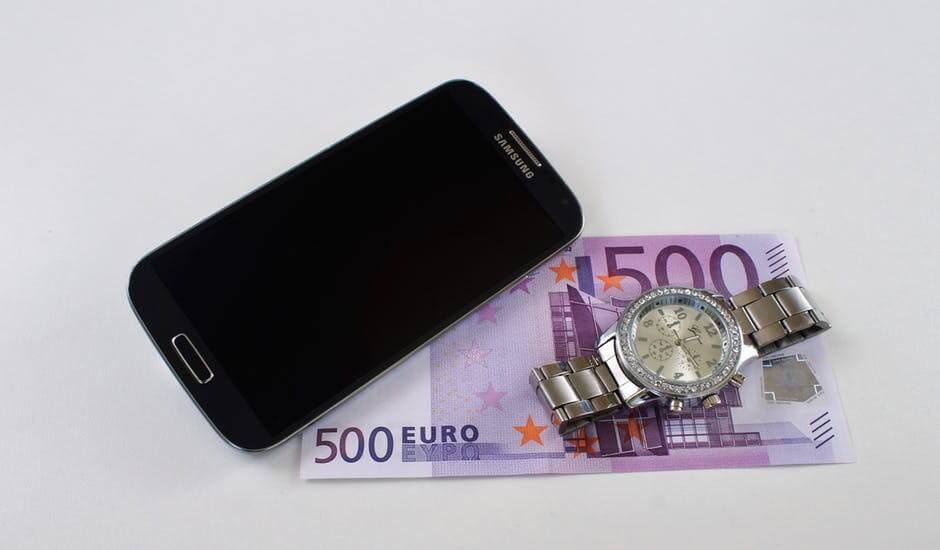Business
On-demand society drives easy-to-use shopping experience
The shopping experience is now made easy with a touch of a button. Mobile commerce, or “m-commerce,” provides a hassle-free experience in buying goods.

In recent years, e-commerce has been massively on the rise, but it gives way to m-commerce. And it seems as though we have a winner here.
Criteo reports that 71 percent of mobile sales in the U.S. happen in the app. They have also noticed that European shoppers are more active in browsing and buying via smartphones than ever before, with 29 percent growth in transactions completed on these devices.
The “2017 UPS Pulse of the Online Shopper” study found that mobile commerce sales will grow to $250 billion by 2020. In fact, according to comStore, we can see year-by-year 45 percent higher growth rate spending on mobile than desktop. In 2016, it was $22.7 billion.
All the numbers show that smartphones are rapidly becoming the major medium for online shopping. It’s also about convenience, which is one of the major factors for today’s consumers. People have become impatient in almost every aspect of life, especially when it’s about services.
Rising demand and expectations
On-demand economy is a bubble that is going to burst. BIA/Kelsey estimates that it will reach $57 billion in total transaction value in the U.S. This isn’t surprising, bearing in mind the fact how easy it is to order items from the comfort of our couch. Nowadays, consumers expect shopping to be as easy as touching a button. That’s why online retailers should pay attention to catering their businesses to be mobile-friendly, otherwise, they risk losing customers.
Technology has evolved at lightning speed so now we can see how buying over the internet or using smartphones is getting easier year-after-year. People now can buy anything from anywhere and at any time. All they need is just a smart device and internet connection. That being said, we can see that nowadays e-commerce businesses cater to smartphone shoppers.
We can also observe how shoppers’ behavior is changing and how it goes hand in hand with technological development. But, online businesses still struggle with ever-growing cart abandonment rate (which is now around 69 percent, according to Baymard Institute). We live in an on-demand economy era which means that people want to have everything now, literally.
Speed and convenience top priorities
SOASTA’s study shows that only 1 in 5 mobile shoppers complete transactions and there are many reasons for that. In general, it’s all about designing interfaces that people like, want, and — what’s most important — know how to use from the very beginning. One of the major tasks for merchants to complete is removing unnecessary complexity and create user experience clear of clutter.
Moreover, the numbers presented by Cloudflare in their ‘Don’t Get Left Behind’ report shows that conversion rate for mobiles is directly linked to mobile site performance. According to their study, Amazon increased sales by 1 percent each time they reduced site latency by 100 milliseconds. Walmart saw 2 percent in conversion increase for every second decrease in loading time.
The loading speed has a visible impact on conversion and, as one of the Google’s research presents, 53 percent of mobile site visitors abandon it if the load speed takes longer than 3 seconds. Retailers and service providers need to stay aware that even a second in site latency costs them sales.
Simplifying checkout process
Shopping through mobile devices went into mainstream naturally with the growing popularity of smartphones and all technological advances. New solutions that spring up like mushrooms also take payments to the next level. This forces online companies to offer payments based on personalization and get customers smoothly through a quick checkout with individual offers.

By 2020, mobile users are estimated at 2.87 billion. The same goes for the number of shoppers, expecting to pay for just about anything, by then. (Source)
According to a Gemalto research, the number of smartphone users worldwide will hit 2.87 billion by the end of 2020. The same study shows that people expect that in a few years, they will be able to pay for anything, anywhere with only a smart device.
When reaching the site and/or shopping takes too much work, customers give up. Apart from loading speed, providing one-click checkout is also a sales saver for merchants. After entering payment details once, mobile shoppers can simply buy items by a tap without having to re-enter required data. It’s quick and convenient, so this is why the biggest brands provide one-click shopping options.
For online consumers, every second count, and it doesn’t matter if it’s picking favorite items or completing a payment process. The possibility of taking immediate action is critical so everything needs to move forward without any interruptions or distractions during the entire purchasing process.
The study from UserTesting shows that consumers expect a seamless shopping experience on each device they use. But designing one path for both web and mobile is not the best idea. To turn one-time customers into returning ones, merchants need to optimize their checkout and design the process with multichannel shoppers’ needs in mind. Time to roll up sleeves, speed up the checkout process and make it more customer-friendly.
Design for multichannel shoppers
Dynamic Yield surveyed shoppers who have made purchases via mobile devices, and most of them have pointed out to having poor customer experience. Still, there is room and opportunity for retailers, payment providers and e-commerce platforms to fill in.
For many, the mobile shopping experience is a nightmare, and it’s because of various factors. Starting from the most painfully-obvious things, too small smartphones’ screen size could be a barrier for some. Customers find it hard to read all the details, picking the item, adding it to a checkout, and then finding a way to pay. However, this is not always because of the screen size, but mostly because merchants don’t provide mobile-optimized websites or well-designed apps.
One of the most common merchants’ mistakes is focusing on revenue and forgetting about the customer experience. They need to remember that the overall experience also has an impact on their business credibility and revenue as well.
Retailers also don’t know their customers intent, and here’s an opportunity for new technology that follows and analyzes consumers behavior. For instance, merchants can use machine learning that helps in drawing out insights from various data points. It then makes it easier to predict customers’ intent and behavior, in order to provide them with a better and personalized experience.
Bottom line
We live in the period of options, and online business owners need to remember that nowadays consumers have shorter attention spans. Businesses that will understand the need for convenience faster, will gain a significant advantage over those that won’t. They should realize that they only have milliseconds to grab consumers’ attention and make them complete transactions.
The aforementioned data show that desktop shopping could be history in a few years, driven by all technology changes and even more advanced payment options. Now, one-third of e-commerce is mobile-based so we can observe an m-commerce shopping craze in its growing phase.
—
DISCLAIMER: This article expresses my own ideas and opinions. Any information I have shared are from sources that I believe to be reliable and accurate. I did not receive any financial compensation in writing this post, nor do I own any shares in any company I’ve mentioned. I encourage any reader to do their own diligent research first before making any investment decisions.

-

 Africa2 weeks ago
Africa2 weeks agoMorocco Allocates 1.3 Billion Dirhams to Boost Startup Ecosystem Under Digital 2030 Strategy
-

 Crypto1 week ago
Crypto1 week agoAAVE Community Challenges Aave Labs Over Governance and Control
-

 Crypto2 weeks ago
Crypto2 weeks agoCrypto ETF Inflows Signal Renewed Market Confidence
-

 Crowdfunding4 days ago
Crowdfunding4 days agoDeep Learning Italia Launches €400K Crowdfunding to Bridge Italy’s Tech Skills Gap


















You must be logged in to post a comment Login